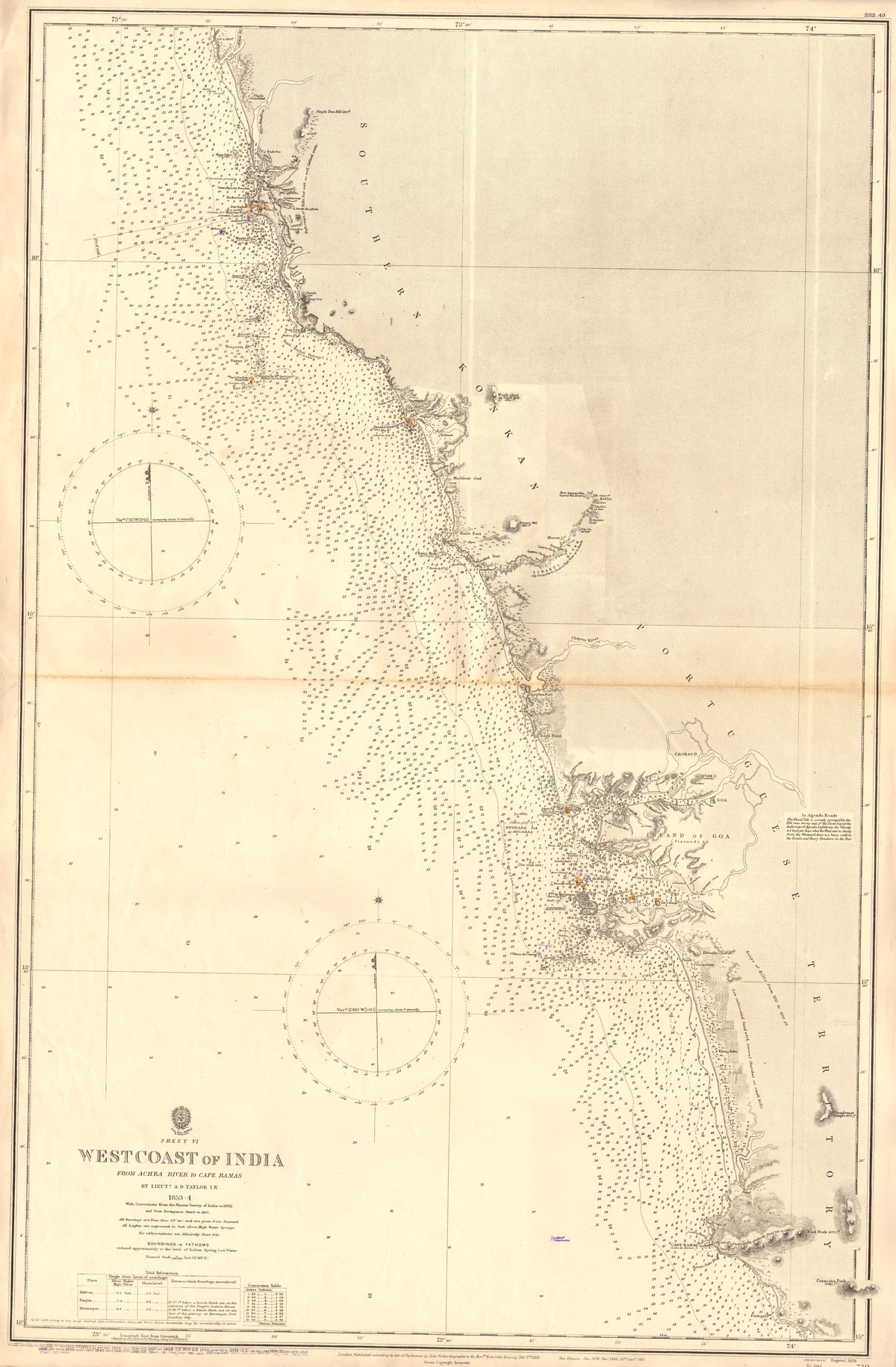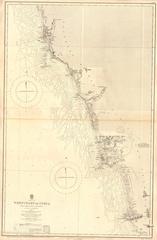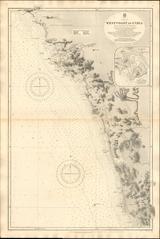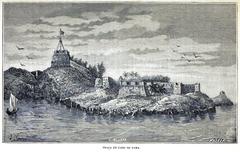
Cabo De Rama Fort: Visiting Hours, Tickets, and Complete Guide to One of Goa’s Most Iconic Historical Sites
Date: 14/06/2025
Introduction
Cabo De Rama Fort, perched on the dramatic cliffs of Canacona in South Goa, is a compelling fusion of myth, military history, and natural beauty. Revered in Hindu legend as a refuge of Lord Rama and later transformed by centuries of regional and colonial rule, the fort today stands as a sprawling ruin with panoramic views of the Arabian Sea. This comprehensive guide covers everything you need to plan your visit, from historical context and architectural highlights to practical information on visiting hours, tickets, accessibility, and travel tips. Cabo De Rama is not just a monument—it’s an experience that immerses visitors in the layered heritage of Goa’s southern coastline.
Table of Contents
- Historical Overview
- Architectural Features and Layout
- Visiting Information
- Activities and Nearby Attractions
- Frequently Asked Questions (FAQ)
- Summary and Visitor Tips
- References and Further Reading
Historical Overview
Mythological and Early Origins
Cabo De Rama Fort owes its name and spiritual aura to the legend of Lord Rama, who, according to local lore, sought refuge here with Sita during their exile (beontheroad.com; travel-goa.in). This association imbues the site with a profound cultural resonance, attracting spiritual seekers as well as history buffs.
Historically, the fort was constructed by the Hindu Soonda dynasty as a coastal bastion, capitalizing on its strategic vantage point over the Arabian Sea (globetrove.com). Its early architecture featured robust laterite ramparts and water reservoirs, elements still partially visible today.
Medieval and Pre-Colonial Era
Throughout the medieval period, Cabo De Rama was a contested stronghold, passing through the hands of various regional powers, including Muslim rulers, before ultimately falling to the Portuguese in the 18th century (beontheroad.com). Remnants of this era, such as the ancient hot and cold water ponds, hint at the site’s blend of military and ritual functions.
Portuguese Conquest and Colonial Transformation
The Portuguese seized the fort in 1763, renaming it “Cabo De Rama” (“Cape of Rama”) and reinforcing its defenses with thick laterite walls, bastions, and cannons (trip101.com). The colonial era also saw the construction of the Chapel of St. Anthony, which remains active and stands as a testament to Goa’s unique religious syncretism (historiaindica.com).
Prison Era and Decline
By the 20th century, as military threats waned, the fort was converted into a government prison (1935–1955), later abandoned after Goa’s liberation in 1961 (travel-goa.in). Its haunting, dilapidated cells contribute to the fort’s aura of legend and mystery.
Architectural Features and Layout
- Ramparts and Bastions: The fort spans approximately 180,000 square meters, encircled by laterite ramparts and bastions that once housed up to 21 cannons (Goa Tourism; Outlook Traveller).
- Main Entrance and Bridge: The imposing gate and Portuguese-era bridge set the tone for the fort’s grandeur (ItsGoa).
- Chapel of St. Anthony: The whitewashed chapel stands in stark contrast to the weathered ramparts and remains a center for local religious festivities (ExploreBees).
- Ancient Ponds: Two reservoirs associated with the Soonda rulers—one hot, one cold—survive as rare features of Hindu fort architecture (Postoast).
- Ruins of Barracks and Prison Cells: Partial remains of Portuguese military barracks and later prison cells provide insight into the site’s layered past (Wikipedia).
- Natural Integration: Palm-lined terraces, rocky outcrops, and a steep path to the secluded Cabo De Rama Beach showcase the fort’s harmonious integration with the landscape (Tripinic).
Visiting Information
Visiting Hours
- Cabo De Rama Fort is open daily from 9:00 am to 5:30 pm.
- The adjacent beach is accessible at all hours, but daylight visits are recommended for safety (Tripoto; Explore Offbeat).
Tickets and Entry
- Entry is free for all visitors. Donations may be accepted for preservation efforts.
- No advance booking is required.
Accessibility
- The main entrance is accessible by vehicle, but interior pathways are uneven and involve stairs.
- Wheelchair access is limited; visitors with mobility challenges should plan accordingly.
- Comfortable footwear is essential.
How to Reach
- By Car or Taxi: Approx. 60 km from Panaji, 28 km from Margao, and 26 km from Canacona.
- By Bus: Infrequent local buses run from Margao and Canacona; last stretches may require a taxi or auto-rickshaw.
- By Scooter/Bike: Popular and convenient for solo travelers.
- By Boat: Available from Agonda or Palolem beaches for a unique approach (Tripoto).
Facilities and Amenities
- Limited parking near the entrance.
- Basic restrooms available.
- No lockers or cloakrooms; secure valuables.
- Few food options nearby—carry snacks and water.
Best Time to Visit
- November to February: Pleasant weather, ideal for exploring.
- Monsoon (June–September): Slippery paths, challenging conditions.
- Summer (April–June): Hot, but less crowded (Explore Offbeat).
Safety Tips
- Wear sturdy shoes and sun protection.
- Carry water and keep valuables secure.
- Mobile coverage may be patchy.
- Respect local customs, especially around the chapel.
Activities and Nearby Attractions
- Explore the Fort: Walk along ramparts, visit the chapel, and discover the ancient ponds and ruins.
- Cabo De Rama Beach: A quiet stretch of sand ideal for relaxation, but swim with caution due to reefs and currents.
- Photography: Panoramic sea views, dramatic cliffs, and atmospheric ruins provide excellent photo opportunities.
- Nature Walks and Birdwatching: The surrounding area is rich in birdlife and native flora.
- Nearby Beaches: Palolem, Agonda, and Betul offer additional scenic escapes.
- Stay and Eat: Options range from eco-resorts and homestays to simple beachside shacks (Tripoto).
Frequently Asked Questions (FAQ)
Q: What are the Cabo De Rama visiting hours?
A: Daily, 9:00 am to 5:30 pm.
Q: Is there an entry fee?
A: No, entry is free.
Q: How can I reach the fort?
A: By car, taxi, bus, scooter, or boat from nearby towns.
Q: Are guided tours available?
A: Local guides may be available; ask at the entrance or arrange in advance.
Q: Is the fort wheelchair accessible?
A: Limited accessibility due to uneven paths and stairs.
Q: Can I swim at Cabo De Rama Beach?
A: Yes, but be cautious of reefs and currents; lifeguard presence is minimal.
Q: What is the best time to visit?
A: November to February for pleasant weather.
Summary and Visitor Tips
Cabo De Rama Fort is a remarkable testament to Goa’s complex past, from its mythological namesake to centuries of shifting rulers and colonial influence. The imposing laterite walls, active chapel, and sweeping sea views create a unique experience for every visitor. With free entry, convenient daytime hours, and a range of activities—from fort exploration to beach relaxation—Cabo De Rama offers something for everyone. For the best experience, visit during the cooler months, wear comfortable shoes, and consider hiring a local guide for historical context. Download the Audiala app for up-to-date information, and don’t forget your camera to capture the fortress’s timeless beauty.
References and Further Reading
- Cabo De Rama Fort Goa: Visiting Hours, Tickets, and Historical Guide, Be On The Road
- Cabo De Rama One of the Oldest Heritage Fort in Goa, Travel Goa
- Cabo De Rama Fort Goa, Trip101
- Goa’s Hidden Gem: Exploring the Enigmatic Cabo De Rama Fort, Outlook Traveller
- Cabo De Rama Fort: A Journey Through History on Goa’s Coastal Expanse, Historia Indica
- Fort Cabo De Rama Goa: Fort That Never Falls, Kerala Archaeology Blogspot
- Cabo De Rama Fort Canacona Goa, Postoast
- Cabo De Rama Fort - A Must Visit Historical Gem in Goa, Explore Offbeat
- Cabo De Rama Fort Visiting Guide, Tripoto
- Cabo De Rama Fort, Traveler Lifes


